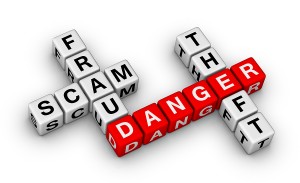 A few months ago I received a call from a client who wanted to buy a machine gun from a fellow collector but he wanted to know what he could do to protect himself during the time between the submission of the Form 4 and the approval of the tax stamp.
A few months ago I received a call from a client who wanted to buy a machine gun from a fellow collector but he wanted to know what he could do to protect himself during the time between the submission of the Form 4 and the approval of the tax stamp.
His concern was a valid one. The regulations governing NFA item transfers makes the sale of those items extremely difficult, even to a licensed dealer.
Why is that? Let’s say that I want to sell a pre-86 machine gun to a fellow member of my gun club; we will call him Joe.
Joe and I will need to submit a Form 4 to the ATF which will, when the tax stamp is finally approved, change the registration of the machine gun in the NFRTR to Joe’s name. Therefore, I am going to want to be paid all, or at least a significant percentage, of the sale price before we ever mail the Form 4s.
Joe on the other hand is being asked to hand over a large sum of money for an item that will remain in my care and keeping for a significant period of time. He is going to want some assurances that the item will be cared for properly, insured, and promptly delivered when the tax stamp is approved.
And it’s not like you can deliver the item to a dealer to hold during the transaction since that would require a Form 4 to the dealer, doubling both the wait time and the tax expense.
So what did I do for my client? I prepared a contract that he and the seller could both sign which laid out the terms of the sale, damages for failure to perform, and who would have responsibility for loss or damage and insurance during the period when the Form 4 was being processed.
An ATF advisory from June reminds us of yet another danger faced by private purchasers and dealers alike; fraudulent Form 4’s.
According to the ATF, some individuals are presenting altered Form 4’s to prospective buyers in order to obtain a deposit, but never deliver the firearms.
The ATF provides the following suggestions for identifying possibly fraudulent Form 4’s:
- The tax stamp has proven to be the most effective way to detect a fraudulent form. The perpetrators often paste a serial number over the serial number on the stamp. Upon closer inspection, it is often possible to detect the outline of the fraudulent serial number.
- In box 3a (Transferor), if the firearm was previously transferred from an FFL, the name of the FFL is often misspelled. A simple internet query for that FFL may assist those who suspect a scam.
- If applicable, box 7 (Transferor’s FFL) will contain the Federal Firearms Licensee number which should be verified through the FFL eZ Check system.
If you are purchasing an NFA item from someone who is not a licensed dealer then make sure you get a chance to examine both the item and the Form 4 carefully. And if you would like a contract which will protect you should the item be lost or damaged while you are waiting for the tax stamp to be approved then I invite you to contact me for a free, confidential consultation.





